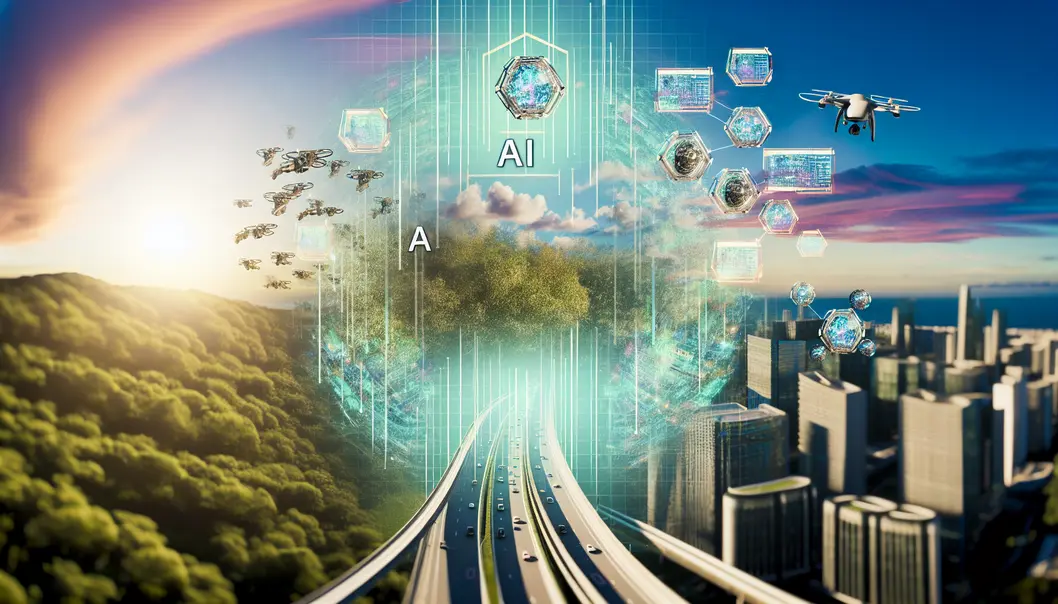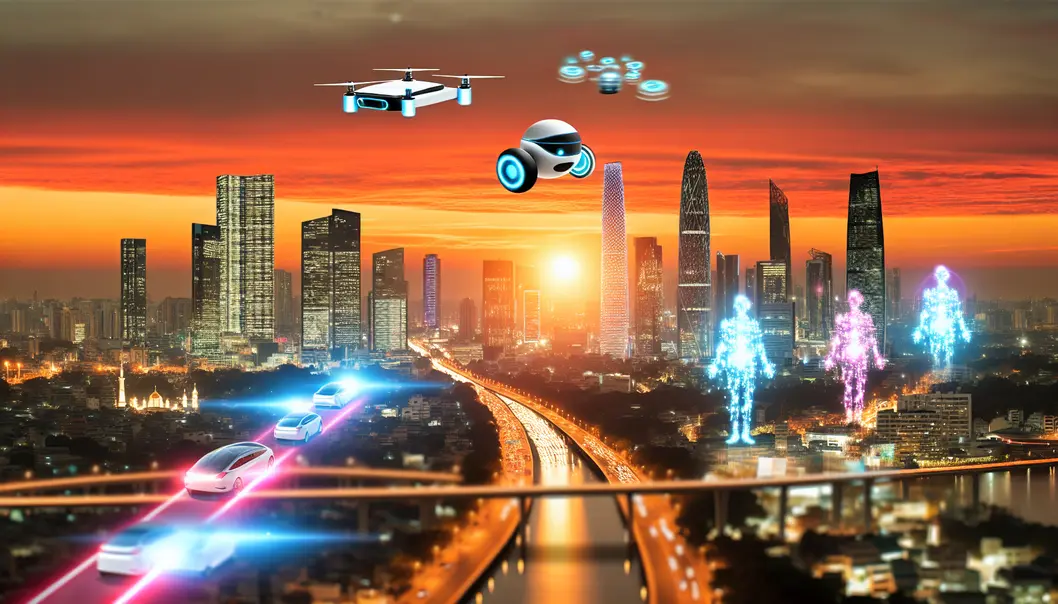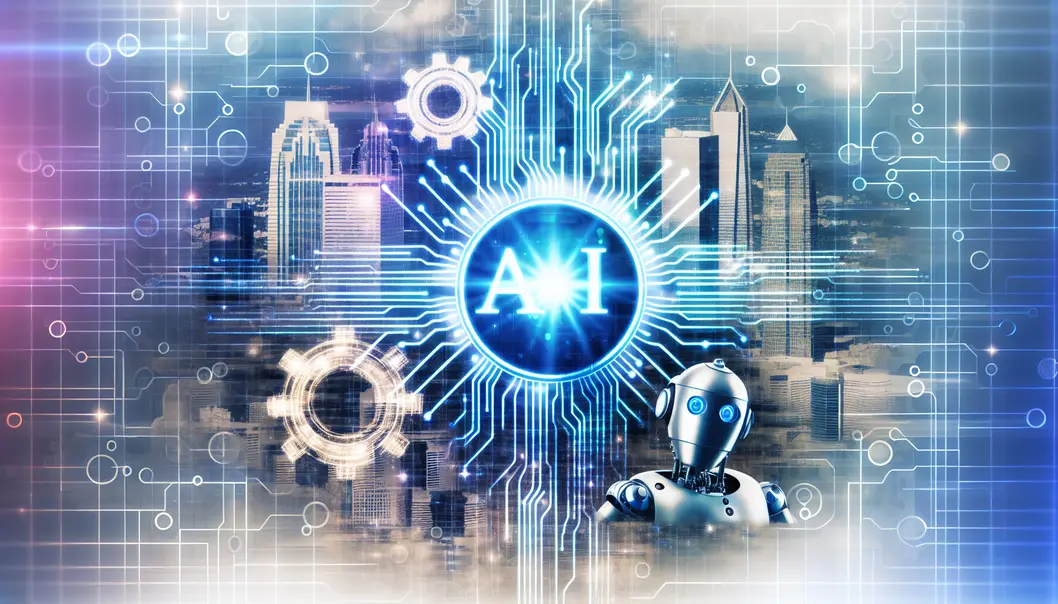As we edge closer to 2025, advancements in AI are set to redefine industries by introducing new capabilities and efficiency levels. From pursuing Artificial General Intelligence to the proliferation of generative AI and enhanced robotics, these innovations promise to revolutionize how businesses operate. This article explores these key trends to understand their potential impacts comprehensively, setting the stage for CTOs to strategically align with forthcoming technological shifts.
The Path to Artificial General Intelligence: Unlocking the Future of AI

The quest for Artificial General Intelligence (AGI) represents a tantalizing frontier for the AI community as we advance towards 2025. The promise of creating machines with human-level intellectual capabilities has fueled a surge in innovation across various domains within AI. This evolution is driven by the need to transcend current limitations and craft systems capable of complex reasoning and decision-making.
The ongoing pursuit of AGI primarily focuses on enhancing AI reasoning abilities. Models are being designed to transition from simple data processing to executing sophisticated logical reasoning. OpenAI’s recent advancements exemplify this shift, showcasing models that engage in real-time problem-solving, thereby offering more meaningful and contextual responses. This progress is crucial, as it defines the stepping stones necessary for crossing into AGI territory.
Another vital element in this journey is the investment in custom silicon. This refers to developing specialized computing infrastructure tailored to the demands of AI. By leveraging application-specific integrated circuits (ASICs), companies are harnessing efficiencies in data processing and performance. Such advancements in hardware not only boost AI capabilities but are also pivotal in deploying edge AI solutions, expanding the reach and applicability of AI technologies.
Simultaneously, the role of large language models and multimodal AI cannot be overstated. These models are expanding beyond the confines of text-based interactions, incorporating images, video, and other data forms. The integration of multimodal data is transforming AI into a more human-like system capable of understanding and generating complex content, thus elevating its utility across diverse sectors.
This technological leap is complemented by significant cloud migrations, where AI workloads are increasingly being supported on scalable cloud infrastructures. This shift addresses the growing needs for powerful computing resources, ensuring that AI systems can operate effectively at scale while maintaining robust security and performance standards.
Yet, with these innovations come challenges, particularly regarding how we measure AI efficacy. Establishing benchmarks, like the ARC-AGI, is crucial in assessing how closely current models hew to the ideals of AGI. Furthermore, the emergence of agentic AI—systems capable of autonomous decision-making—poses new questions about the governance and ethical implications of AI.
2025 is poised to be a defining year for AGI ambitions. As these trends continue to evolve, they offer enormous opportunities for groundbreaking applications, albeit accompanied by significant ethical and regulatory questions that will need resolution. The journey towards AGI is as much about navigating these challenges as it is about technological progress.
The Dual Frontier: AI Reasoning and Custom Silicon Shaping the Future of 2025

In the ever-evolving domain of artificial intelligence (AI), the year 2025 marks a pivotal phase influenced by significant strides in AI reasoning and custom silicon. As independently powerful advancements, these technologies collectively bolster the field of AI, offering new dimensions in efficiency and capability across myriad applications.
AI reasoning represents a leap from foundational learning to a profound ability to think, analyze, and make decisions. This evolution demands extensive computation, pushing AI systems to move beyond basic interpretation to grappling with intricacies akin to human thought processes. Larger models, often dubbed frontier models, are at the forefront of this transformation. Not only can they undertake a variety of tasks from writing to coding, but they also handle specific industry needs with nuanced proficiency. Fields ranging from scientific research and law to medicine are witnessing enhanced decision-making capabilities due to these advanced reasoning powers.
Simultaneously, the deployment of custom silicon is paving the way for optimized performance tailored specifically for AI functions. Unlike traditional processors, application-specific integrated circuits (ASICs) designed for AI promise superior efficiency. These chips facilitate substantial performance gains while managing power consumption and memory resources effectively, thus meeting the escalating compute demands without inflating costs. The rise of edge computing, which processes data on devices directly, benefits significantly from custom silicon, allowing for reduced latency and enhanced privacy by maintaining data locally.
The convergence of AI reasoning and custom silicon is catalyzing several 2025 trends. The sheer power required to sustain sophisticated AI operations is driving increased demand for customized chip solutions. Hyperscalers—large-scale data center operators—see lucrative opportunities here, as enterprises embark on expansive cloud migrations requiring robust infrastructure for advanced AI tasks. The fusion of reasoning and silicon extends beyond sheer computational prowess; advancements in localized processing diminish the need for constant cloud connectivity, supporting real-time analytics while reinforcing data privacy.
Furthermore, the landscape of scientific research stands to gain a monumental boost. The confluence of advanced reasoning with optimized hardware is accelerating breakthroughs across diverse domains like biomedicine, where rapid simulations are drastically shortening drug development timelines. Globally, governments are investing heavily in this space, with nations setting aside billions to spur tech innovation and regulate its impact responsibly.
The integration of enhanced AI reasoning with custom silicon not only refines operational efficiencies but unveils novel potential in intelligent automation, reshaping business dynamics and societal functions. As we traverse 2025, these intertwined advancements promise not just evolutionary improvements, but revolutionary shifts in how the world leverages AI.
Generative AI Meets Robotics: Forging New Frontiers in 2025

In 2025, the fusion of generative AI and robotics is set to redefine industry landscapes by elevating efficiency and problem-solving potential. This synergy leverages the strengths of both technologies to create solutions that go beyond the capacities of traditional methods. The integration represents a broader trend where AI’s evolution into generative capabilities is no longer confined to digital or conceptual domains but extends deeply into the physical world through robotics.
Generative AI empowers robots to transcend conventional programming limitations, introducing a dynamic adaptability to manufacturing processes. Unlike their predetermined counterparts, these robots can simulate, evaluate, and optimize in real-time, leading to unprecedented autonomy in process improvements and decision-making. This capability is pivotal in scenarios where adaptability and continual learning are essential, like manufacturing environments that require precision and flexibility.
In many ways, AI-driven robotics solutions are spearheading this transformative venture. Collaborative tools like the AI Accelerator toolkit, crafted in collaboration with industry leaders, empower robots with improved perception and sophisticated decision-making capabilities. These advancements enable robots not only to navigate complex environments but also to effectively collaborate with humans through adaptive learning from human demonstrations. Such progress marks a critical shift towards collaborative robotics, where the line between human and machine tasks blurs, offering flexibility and enhanced productivity.
Additionally, agentic AI is emerging as a revolutionary force in robotics, bestowing machines with autonomous operational capabilities. This type of AI equips robots with the ability to assess complex situations and set independent goals, reducing dependency on human intervention, making strides in adaptive automation and predictive maintenance. As agentic AI becomes more refined, it promises to revolutionize how we perceive robotics autonomy and integration across various sectors.
As industries such as manufacturing, healthcare, and retail continue to embrace these technologies, the impact is becoming more evident. In manufacturing, the emergence of autonomous production setups or ‘dark factories’ exemplifies the potential of these integrations—creating environments where production can occur without human presence. Meanwhile, in healthcare, AI-enhanced robots assist in surgeries and elderly care, offering precision and personalized attention. In retail, customer interactions and inventory management are revolutionized by AI-powered robots that enhance shopping experiences through insightful, real-time adaptations.
The trajectory of AI and robotics integration towards 2025 showcases a transformational journey where barriers to autonomous, intelligent robotics solutions dissolve, unlocking an era of innovation and efficiency. This evolution is not merely a trend but a paradigm shift that holds the promise of reshaping industries, driven by the relentless progress of AI capabilities.
Final thoughts
The anticipated AI trends of 2025 signal a transformative period marked by AGI advancements, refined AI reasoning, and seamless robotics integration. These developments promise groundbreaking capabilities but also come with challenges in ethics and governance. For CTOs, aligning with these shifts is crucial, promising not just increased efficiencies but also transformative business strategies.
Would you like to know how to Transform Your Organization with AI Mechanised Hyperautomation?
Learn more: https://docextractor.com/contact-us/
About us
At DocExtractor, we leverage advanced AI and machine learning technologies in building tailored solutions to bring automation and intelligence in your operations. Each tool reflects our mission to make AI both accessible and impactful.


Leave a Reply